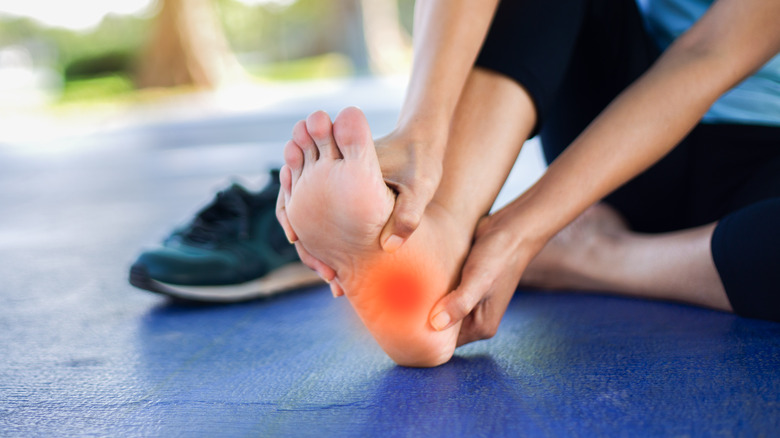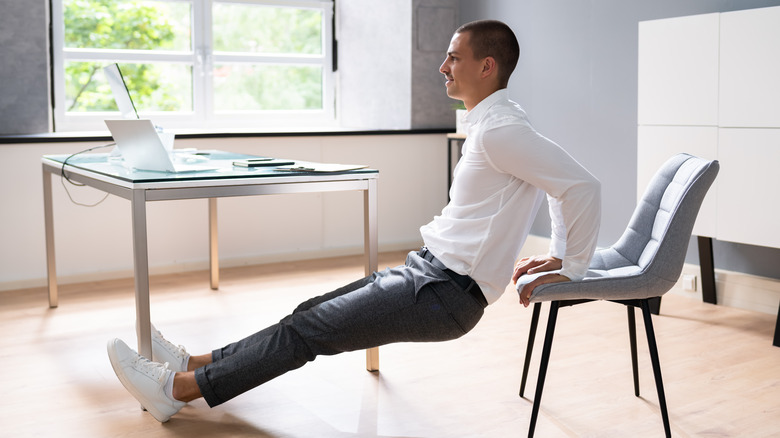Does Yoga Help Plantar Fasciitis?
Plantar fasciitis is relatively common, affecting about 10% of people in the United States at some time in their lives, according to Pain Doctor.
The plantar fascia is the tissue under your foot that connects the heel with the bottom of your foot, and it can easily get inflamed in runners if they suddenly increase their mileage or intensity. Non-athletes can also get plantar fasciitis by wearing ill-fitting shoes or standing on their feet all day, particularly on hard surfaces. The plantar fascia gets small tears through excessive pressure on the arch, and plantar fasciitis can develop if these tears don't get a chance to heal.
Typical symptoms of plantar fasciitis are pain in the heel or arch when you get out of bed in the morning or when you climb stairs (via Pain Doctor).
Although yoga can often help plantar fasciitis, improper alignment and positioning can make symptoms worse, according to Apple Podiatry. You'll want to keep your feet and knees aligned and avoid excessive rolling inward or outward of your feet. However, some yoga stretching and strengthening can help plantar fasciitis.
Yoga to support and stretch the plantar fascia
If you're already suffering from plantar fasciitis, you can do some basic movements sitting on a chair or standing. Cleveland Clinic suggests sitting on the edge of a chair with your legs extended, feet flexed, and heels pressed into the floor. Begin wiggling your toes and ankles to feel the small muscles of your legs and feet. Then move your feet back and forth like windshield wipers and circle your ankles in both directions. While keeping your heels planted and toes facing up, lean forward while maintaining a neutral spine. You should feel a gentle stretch in the back of your legs, particularly your calves.
Yoga Journal suggests poses such as mountain pose, chair pose, high lunge, and seated forward bend to flex the feet and heels. You can also try thunderbolt pose to really get a stretch of the plantar fascia. From all fours, slowly sit back on your heels with your toes tucked under. Your knees should be together and your feet parallel. To reduce the intensity, sit on a block or two.
According to Pain Doctor, it's best to find poses that improve foot and ankle flexibility. Strong and flexible calves take tension off the plantar fascia. With any poses or stretches, back off the stretch if you can't breathe deeply and relax.


